Peacock Butterfly - Inachis io
Phylum: Arthropoda - Class: Insecta - Order: Lepidoptera - Family: Nymphalidae
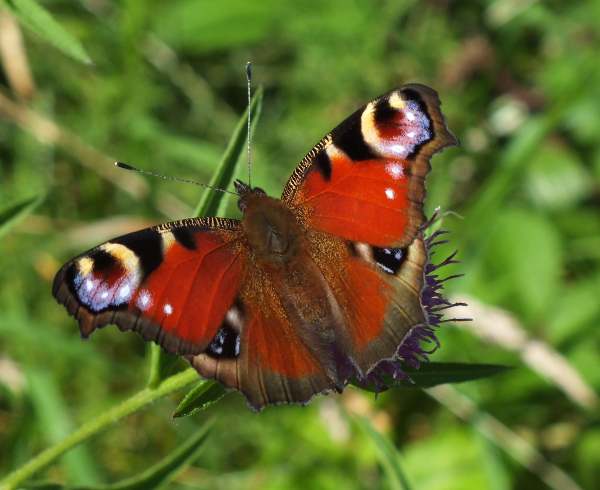
The nectar in Buddleia flowers acts as a magnet for these large an imposing butterflies of gardens, wasteland and railway embankments. The wing eye-spots are thought to be a scary deterrent to would-be predators.
Males and females appear similar, but whereas the typical wingspan of a male is 6.5cm the female is somewhat larger with an average wingspan of about 7cm.

Aglais io is now generally accepted as the scientific name of the Peacock butterfly, which was formerly classed as the only member of the now defunct genus Inachis.
The common name is sometimes written in full as European Peacock butterfly, thus clearly distinguishing it from the American species also commonly referred to as the Peacock Butterfly. Its specific name io, is a reference to Io, who was a priestess of Hera, the wife of Zeus in Greek mythology. Zeus lusted after Io, but his wife became suspicious. When Zeus turned Io into a cow, Hera asked for and was given the beast, which she immediately put into captivity.
I'll leave you to research the twists and various endings to this tale, in one of which the large eyes of the cow, Io, became the eyes in the Peacock's tail feathers - hence the etymological connection with this lovely butterfly.
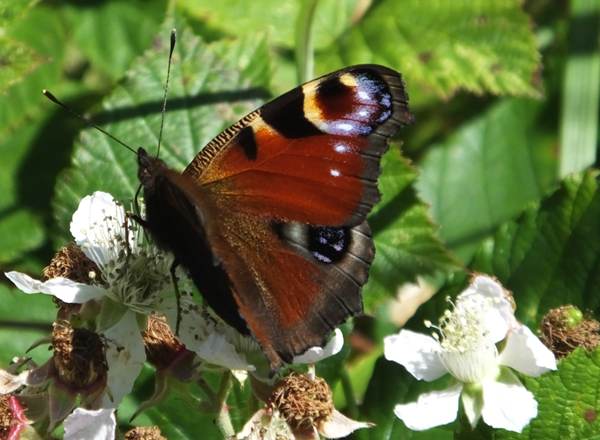
Distribution
Occurring throughout Britain and Ireland, although scarce or not yet reported from some parts of northern Scotland, the Peacock is one of the very few butterflies that seem to be extending in range and increasing in population.

Elsewhere this most beautiful of Britain's butterflies is also common across mainland Europe and Asia. It is catholic in its habitat requirements, and as long as there are plenty of flowers present you can expect to see Peacock butterflies in orchards, meadows, woodland, gardens and parkland.

The far from spectacular underwing colouring of the Peacock Butterfly makes it more difficult for predators to find it when it is at rest; this may provide a degree of protection, but only if the butterfly rests against a dark background!
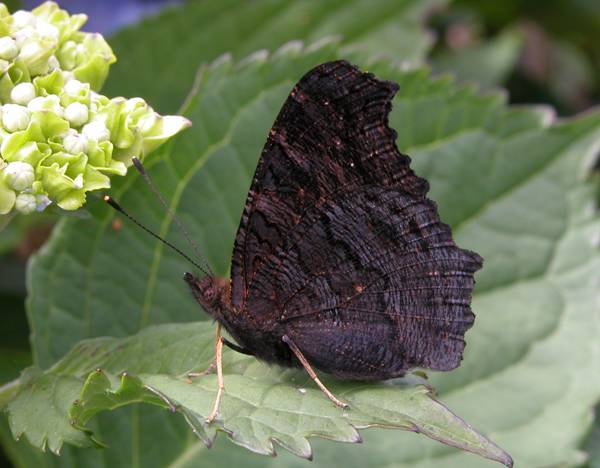
Lifecycle
Peacock butterflies spend the winter as adults, hibernating in dark corners in buildings, although a warm and sunny day will sometimes bring them out for a few hours even in midwinter; black undersides to the wings make them hard to spot in such places. Emerging from hibernation in March or early April, the over-wintered Peacocks mate and produce a first brood that mature and take to the wing in late July. Occasionally a sparse second brood is produced.
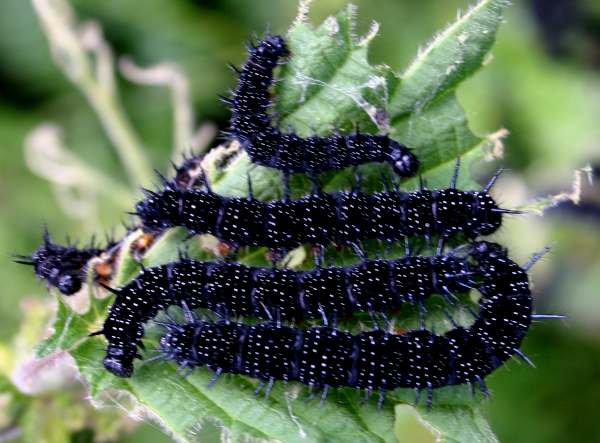
Females lay eggs in clusters on the undersides of the larval foodplant, sometimes hops but much more often Stinging Nettles, Urtica dioica. In anything between one week and three, caterpillars emerge from the eggs and build a communal web near the top of the foodplant. From this web the black hairy caterpillars foray and feed, moving to nearby plants when necessary and there creating new webs.
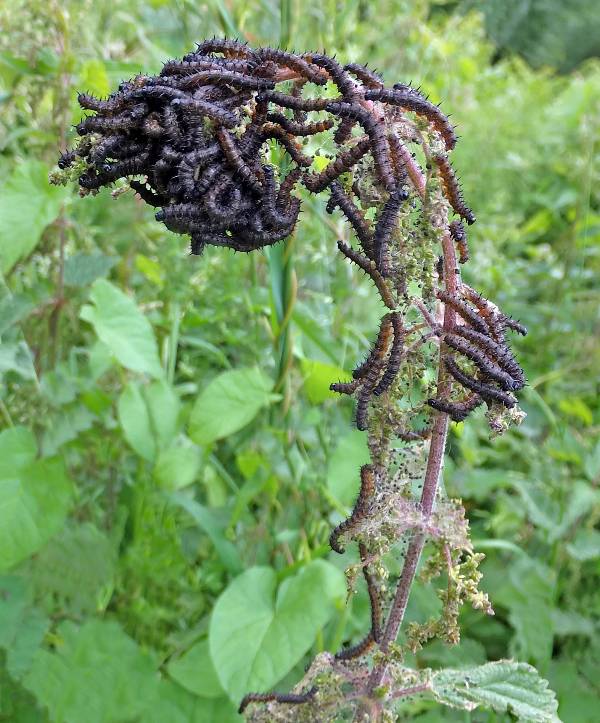
Above: early instar larvae, a few of which have just shed their skins.
The larvae moult shed their skins) four times during development, and then, when fully grown, the caterpillars leave their communal webs and seek suitably sheltered sites for pupation.
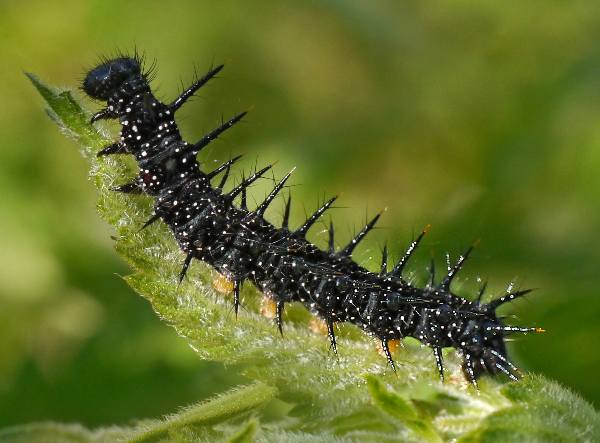
The Peacock butterfly larva shown above is fully developed and ready to pupate.
Pupae, which are either dark grey or yellow, are attached singly to the undersides of leaves or to a stem and, depending on the weather, the pupal stage lasts between two and four weeks before the winged adult Peacock butterflies emerge.

Acknowledgements
This page includes pictures kindly contributed by Betty and Tony Rackham.
Studying butterflies and moths...
Excited at the prospect of flyfishing? So are we, and we're pretty sure you would find the Winding River Mystery trilogy of action-packed thrillers gripping reading too. Dead Drift, Dead Cert, and Dead End are Pat O'Reilly's latest river-and-flyfishing based novels, and now they are available in ebook format. Full details on our website here...
Buy each book for just £4.96 on Amazon...
Please Help Us: If you have found this information interesting and useful, please consider helping to keep First Nature online by making a small donation towards the web hosting and internet costs.
Any donations over and above the essential running costs will help support the conservation work of Plantlife, the Rivers Trust and charitable botanic gardens - as do author royalties and publisher proceeds from books by Pat and Sue.
